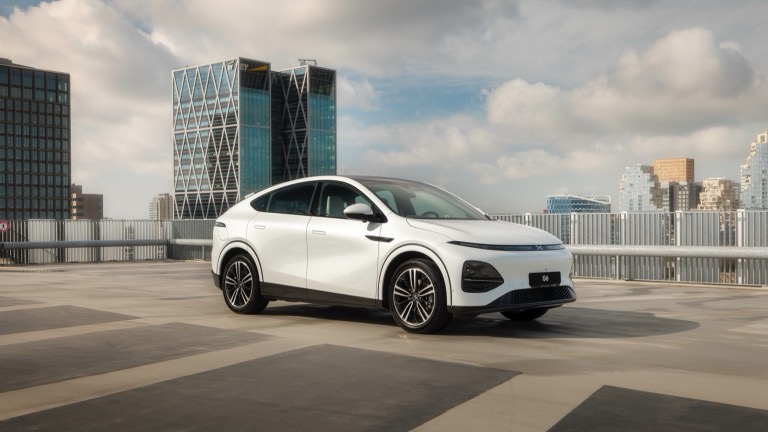
Introduction
Electric vehicles (EVs) have shifted from niche to mainstream in Australia. With more models arriving, growing public charging networks and falling operating costs, the case for switching is stronger – but whether an EV is right for you still depends on practical factors: where you live, how you drive, and your budget. Below is a concise pros, cons and decision points to help Australian drivers decide.
Why EVs are increasingly attractive in Australia
- Lower running costs: Charging an EV typically costs substantially less than filling a petrol or diesel tank. Estimates commonly cited show fuel-cost savings of up to 70% compared with internal combustion engines, and many owners report lower ongoing energy spend.
- Reduced servicing: EVs have far fewer moving parts (no oil changes, fewer filters and simpler drivetrains), which tends to reduce routine servicing frequency and cost – some owners see maintenance savings of around 30-40% over time.
- Better driving experience: Instant torque, quiet operation and smooth regenerative braking make EVs pleasant to drive for many commuters.
- Cleaner local air and lower tail‑pipe emissions: EVs produce no exhaust emissions at the vehicle, improving local air quality. When charged from cleaner grid electricity, overall greenhouse gas emissions fall significantly.
- Broader model range and market support: Australia is seeing more EV variants across body types – small cars, SUVs and, increasingly, utes and vans – plus growing dealer support and second‑hand options.
- Policy and commercial incentives: Some states, councils and private providers offer incentives such as stamp‑duty concessions, rebates, reduced registration or access to cheaper workplace charging; corporate fleet offers are also expanding.
Key downsides and practical limitations
- Higher purchase price: New EVs often have a higher upfront cost than comparable petrol models. While total cost of ownership can close that gap, the initial sticker shock remains a barrier for many buyers.
- Range and charging access: Although ranges are improving and long‑distance fast chargers are being installed on main corridors, range anxiety still factors for rural drivers and those without reliable local charging. Public charging is uneven in some regions.
- Battery lifespan and replacement cost: Modern EV batteries typically have multi‑year warranties (commonly eight years or a specified kilometre limit), but battery replacement outside warranty can be expensive.
- Dependence on electricity prices and grid resilience: Charging costs fluctuate with electricity prices. In prolonged outages or in very remote locations, EV ownership presents additional challenges compared with fuelled vehicles.
- Payload, towing and specific needs: If you regularly tow heavy loads or need certain payload capacities – particularly important for tradies and some regional drivers – not all EVs yet meet those requirements.
How to decide – factors to weigh
- Daily kilometres: If most trips are local and you can charge at home, an EV is often a strong choice. The less you rely on long, frequent drives without reliable fast charging, the better the economics.
- Access to charging: Home charging is the biggest convenience and cost saver. If you live in a unit or rental without easy overnight charging, check workplace or nearby public options.
- Budget and finance: Compare total cost of ownership – purchase, fuel/energy, servicing, insurance and likely resale – not just the sticker price. Behavioural finance options (novated leases, fleet deals) can improve affordability.
- Location: Urban and suburban drivers benefit most from current infrastructure. Regional and remote owners should map available chargers on likely routes before committing.
- Environmental priorities: If lowering your household’s transport emissions is a high priority, an EV is a straightforward path – especially when charged from renewable or low‑emission electricity.
Practical tips for buyers
- Install a home charger where possible – a dedicated home EV charger saves time and money versus relying solely on public chargers.
- Use charging network apps (Chargefox, Evie or others) to plan long trips and estimate real speeds and costs.
- Check battery warranty terms and degradation policies, and factor these into resale expectations.
- Test drive candidates in the conditions you normally face (city, highway, towing) and review real-world range rather than manufacturer claims.
- Consider used EVs: second‑hand prices can represent good value as more early adopters upgrade.
Conclusion
For many Australian drivers an electric car is now a viable and often economical choice, particularly if you drive mostly locally, can charge at home and prioritise lower running costs and reduced emissions. Higher upfront prices and regional charging gaps remain real considerations, so weigh your driving patterns, local infrastructure and budget. As battery technology improves and charging networks expand, EVs will become an increasingly compelling option for a broader cross‑section of Australians.
FAQs
Q: Are EVs cheaper to run than petrol cars in Australia?
A: Generally yes – electricity is usually cheaper per kilometre than petrol, and maintenance costs are typically lower. Exact savings depend on electricity prices, driving patterns and the vehicle model.
Q: How far can modern EVs travel on a single charge?
A: Many current models offer 300-500 km real‑world range, with some long‑range variants exceeding that. Real range varies with speed, load, towing and weather.
Q: Can I charge an EV at home?
A: Yes – most EV owners charge at home overnight using a dedicated home charger (wall box) or even a standard socket for low‑power charging. Home charging is the most convenient and cost‑effective option.
Q: Is public charging infrastructure reliable across Australia?
A: Coverage is strong in major cities and along key highways, but there are gaps in some regional and remote areas. Planning long trips using charging network maps is recommended.
Q: How long do EV batteries last?
A: Batteries are typically covered by multi‑year warranties (commonly around eight years or a specified kilometre limit). Battery degradation occurs gradually; severe issues are rare under normal use.
Q: What about towing and utes?
A: Electric utes and tow‑capable models are emerging, but if you regularly tow heavy loads, check the specific vehicle’s towing capacity and real‑world range when loaded.
Q: Are there government incentives for EV buyers in Australia?
A: Some states and territories and certain councils offer incentives or concessions. Incentive availability changes, so check current local programs before purchasing.
Q: Is buying a used EV a good idea?
A: The used EV market can offer strong value, but inspect battery health, warranty status and service history. Certified pre‑owned programs from dealers offer extra reassurance.
About EV Evolution
EV Evolution is the leading online platform dedicated to Australian electric vehicle owners and enthusiasts. We foster a vibrant community, delivering essential EV news and insights, and enhancing user engagement through our innovative, AI-powered chatbot for dynamic discussions. Our mission is to empower Australian electric vehicle owners and enthusiasts by fostering a vibrant, AI-driven online community that connects, informs, and advances the nation’s electric vehicle landscape.




